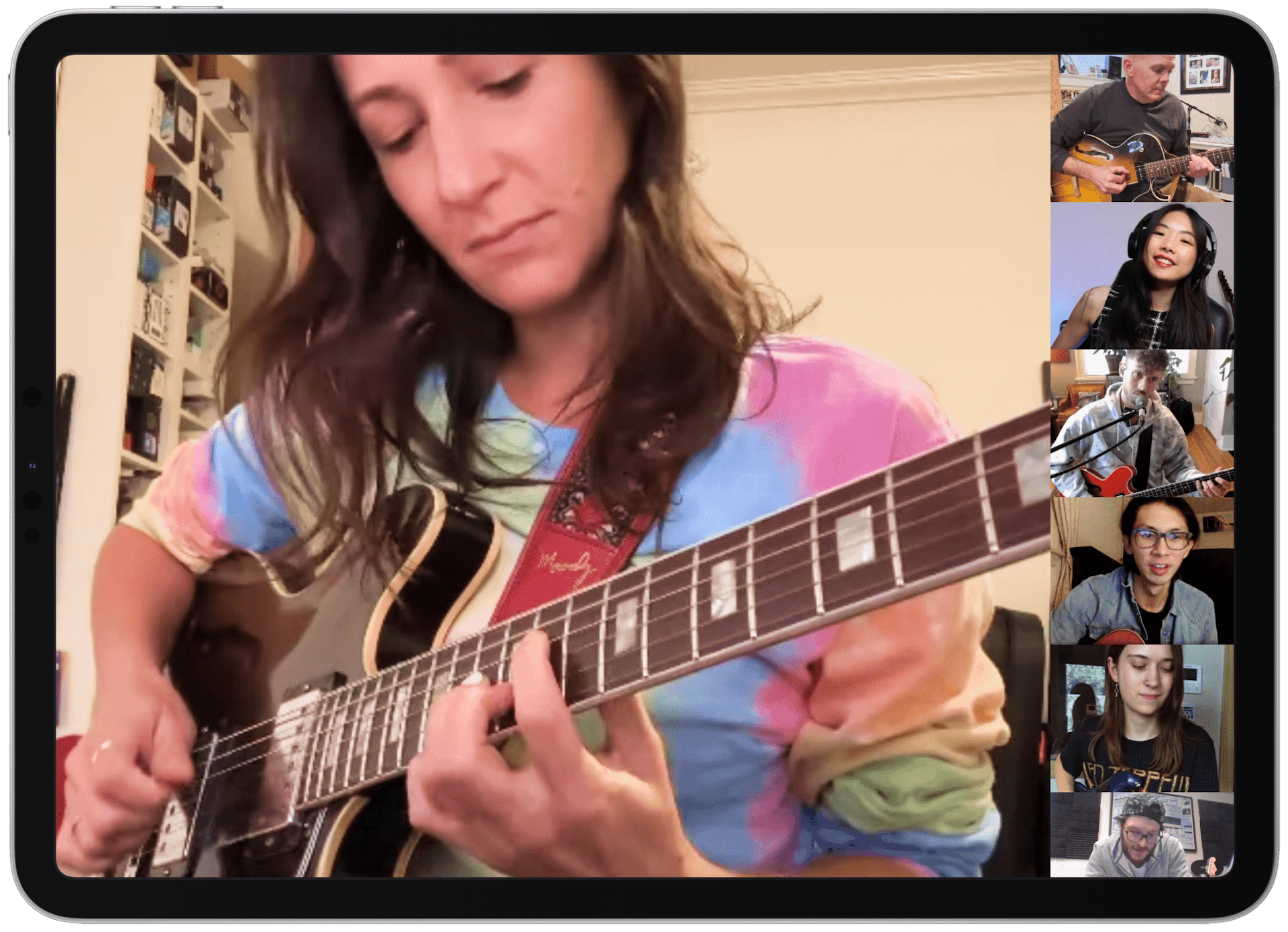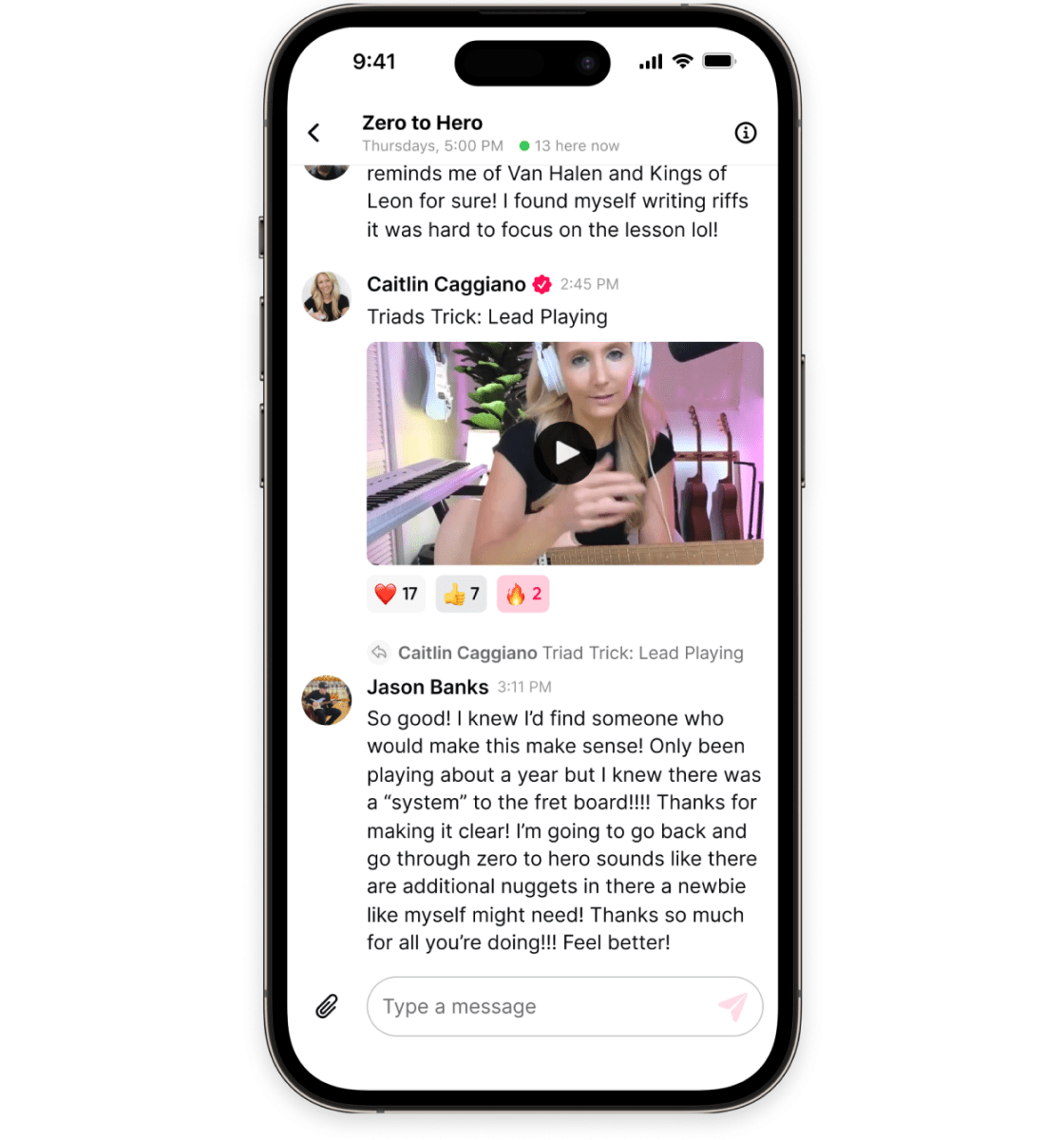Fretboard Visualization | Part 1
Group guitar class taught by Mike Salow
1 hour per week · intermediate
Get notified when new times are added
We'll let you know when Mike Salow adds new classes to Til.
In part 1 of this Fretboard Visualization course we'll focus on developing your knowledge of the CAGED system as a visualization tool. We'll start by learning how to use octave shapes to visualize how intervals, triads, pentatonic (and blues) scales all relate to each other. We'll also delve into tools (outside of the CAGED system) that will help you connect every position of the pentatonic scale, in order to create long flowing lines and sequences similar to the likes of Eric Johnson, Joe Bonamassa, or Scott Henderson. Part 1 of this course will directly set you up for success in Part 2 where we will further discuss intervals, the 7 modes, 7th chords (with extensions), and arpeggios. We will also touch lightly on chord progressions and harmony.
What's included
5.00 · 25 students · 15 lessons
Octave Shapes
Octave Shapes
Being able to locate the root notes of chords and scales is one of the most fundamental/useful things you can learn on the guitar. The best way to locate all root notes is to use octave shapes. We'll learn that there are 7 in position octave shapes available as well as 1 double octave shape. Once you learn this, you'll be able to locate any note, anywhere on the fretboard.
Triads
Triads
We'll use the CAGED system to visualize how we can take our 5 basic chords (in major or minor) and barre them in order to get every possible position of each chord. Each triad (chord) position will have a coinciding pentatonic shape that we will learn as well. The triad has 3 of the 5 notes that make up a pentatonic scale so in turn, the triad notes are ideal landing notes when soloing.
Pentatonic Scales
Pentatonic Scales
The pentatonic scale is the easiest scale to use when soloing. This is partly because of the limited information within the scale. Most chord scales (like the major or minor scale) have 7 notes, while the pentatonic scale only has 5 notes (penta = 5). We'll further learn how functional the pentatonic scale is within Part 1 of this course.
Expanding Beyond the Pentatonic Boxes
Expanding Beyond the Pentatonic Boxes
Once we've fully discussed triads and pentatonic scales we will then delve into the Blues scale in all positions, as well as using 2 string symmetrical patterns to develop longer pentatonic lines and sequences. If we have time, we will touch lightly on major and minor scales and the modes, which will be discussed in detail in Part 2 of the course.
For someone who's played a lot of cowboy chords, this was a great class for me to better understand the fretboard and be more comfortable with leads and solos.
Awesome course from a down to earth and well educated teacher. My knowledge of the fretboard and my improvisation have increased over the 8 weeks working with Mike. I highly recommend.
Guitar lessons on Til
Close to Home, Far from Ordinary
Classes on Til are personalized learning journeys led by the best guitarists in the world.

The world's best guitarists are in your corner.
Your teacher personalizes class to keep you on track, answers your questions, and motivates you to keep going.
A good time, anytime.
Join lessons live or watch later with unlimited access to recordings. Have a question? There's a chat for that.


The biggest bang, boogie, and blast for your buck.
It's like having a world-class teacher in your living room. At a fraction of the cost.
Questions? Answers.
No upcoming times
